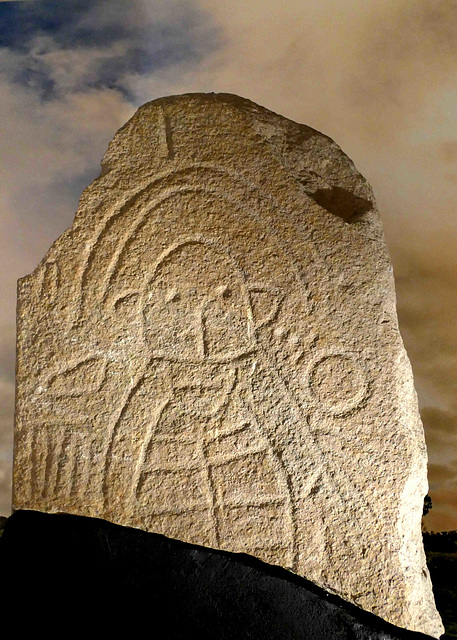Location
Lat, Lng: 37.255027, -6.943379
You can copy the above to your favourite mapping app.
Address: Calle Cádiz Salvatierra 15D-15A, 21003, Centro, Huelva, Andalucía
You can copy the above to your favourite mapping app.
Address: Calle Cádiz Salvatierra 15D-15A, 21003, Centro, Huelva, Andalucía
See also...
Keywords
Authorizations, license
-
Visible by: Everyone -
All rights reserved
-
48 visits
Huelva - Museo de Huelva


It is believed that trade contacts with the Phoenicians existed from the late 10th century, and it is even assumed that Tartessos was located at this site. In addition to objects made of silver, copper, iron, ivory and stone, many thousands of fragments of clay vessels were found during excavations from around 900 to 770 B.C. in 1998. Huelva was probably an early Phoenician emporium and it was flourishing under the Carthaginians and Romans, who began to mine ore deposits. Under the Visigoths and Arabs, from whom the city was reconquered by Alfonso X the Wise in 1257, the city came to a standstill.
In 1880 it still only had 13,000 inhabitants, then it grew fast. It owes its boom to the mineral deposits on the Rio Tinto (Minas de Riotinto), as from the last quarter of the 19th century, the town became a small British colony. The reason for this was the permission granted by the Spanish government in 1873 for the mines of Riotinto to be commercially developed and utilised by the Rio Tinto Company Limited. As a result, the town and its infrastructure began to grow and the sleepy little village became a modern industrial town of the 19th century and an elegant town in the first centuries of the 20th-
The British also brought football to Spain, which led to the founding of the first football club in Spain - Recreativo Huelva - in 1889.
The museum is very young and focuses on the impressive archaeological site of the province of Huelva with interesting exhibits from Roman and mining history. There is also an impressive collection of Spanish paintings.
This fragment of a stele weighs 250 kg and is about 95 cm high. It is dated to the Bronze Age 2500 - 1000 BC. It depicts an anthropomorphic figure wearing a kind of diadem
In 1880 it still only had 13,000 inhabitants, then it grew fast. It owes its boom to the mineral deposits on the Rio Tinto (Minas de Riotinto), as from the last quarter of the 19th century, the town became a small British colony. The reason for this was the permission granted by the Spanish government in 1873 for the mines of Riotinto to be commercially developed and utilised by the Rio Tinto Company Limited. As a result, the town and its infrastructure began to grow and the sleepy little village became a modern industrial town of the 19th century and an elegant town in the first centuries of the 20th-
The British also brought football to Spain, which led to the founding of the first football club in Spain - Recreativo Huelva - in 1889.
The museum is very young and focuses on the impressive archaeological site of the province of Huelva with interesting exhibits from Roman and mining history. There is also an impressive collection of Spanish paintings.
This fragment of a stele weighs 250 kg and is about 95 cm high. It is dated to the Bronze Age 2500 - 1000 BC. It depicts an anthropomorphic figure wearing a kind of diadem
- Keyboard shortcuts:
Jump to top
RSS feed- Latest comments - Subscribe to the comment feeds of this photo
- ipernity © 2007-2025
- Help & Contact
|
Club news
|
About ipernity
|
History |
ipernity Club & Prices |
Guide of good conduct
Donate | Group guidelines | Privacy policy | Terms of use | Statutes | In memoria -
Facebook
Twitter











Sign-in to write a comment.